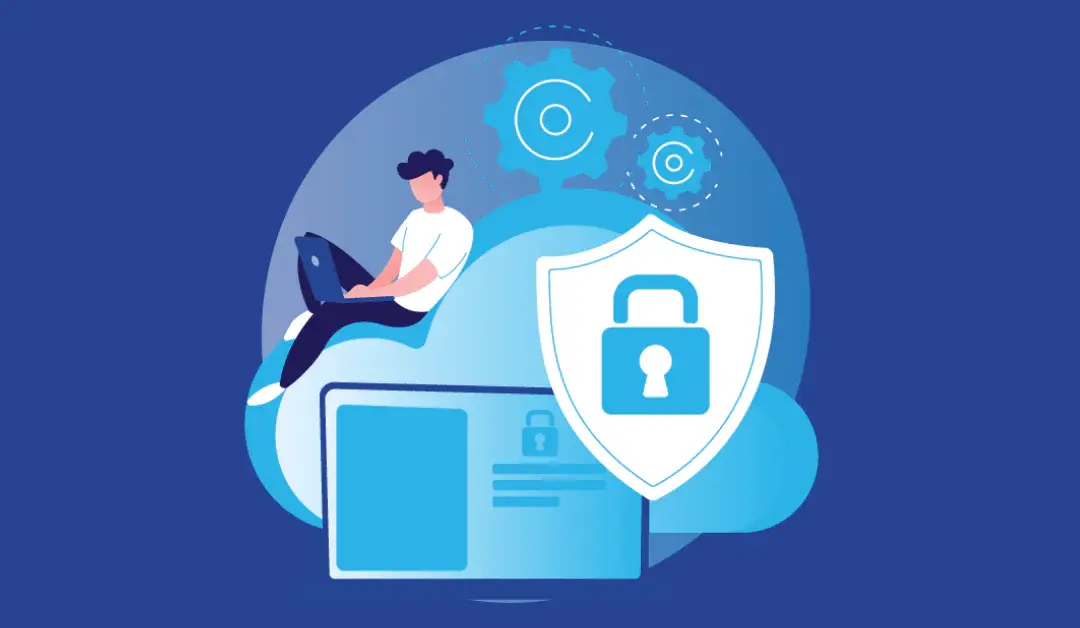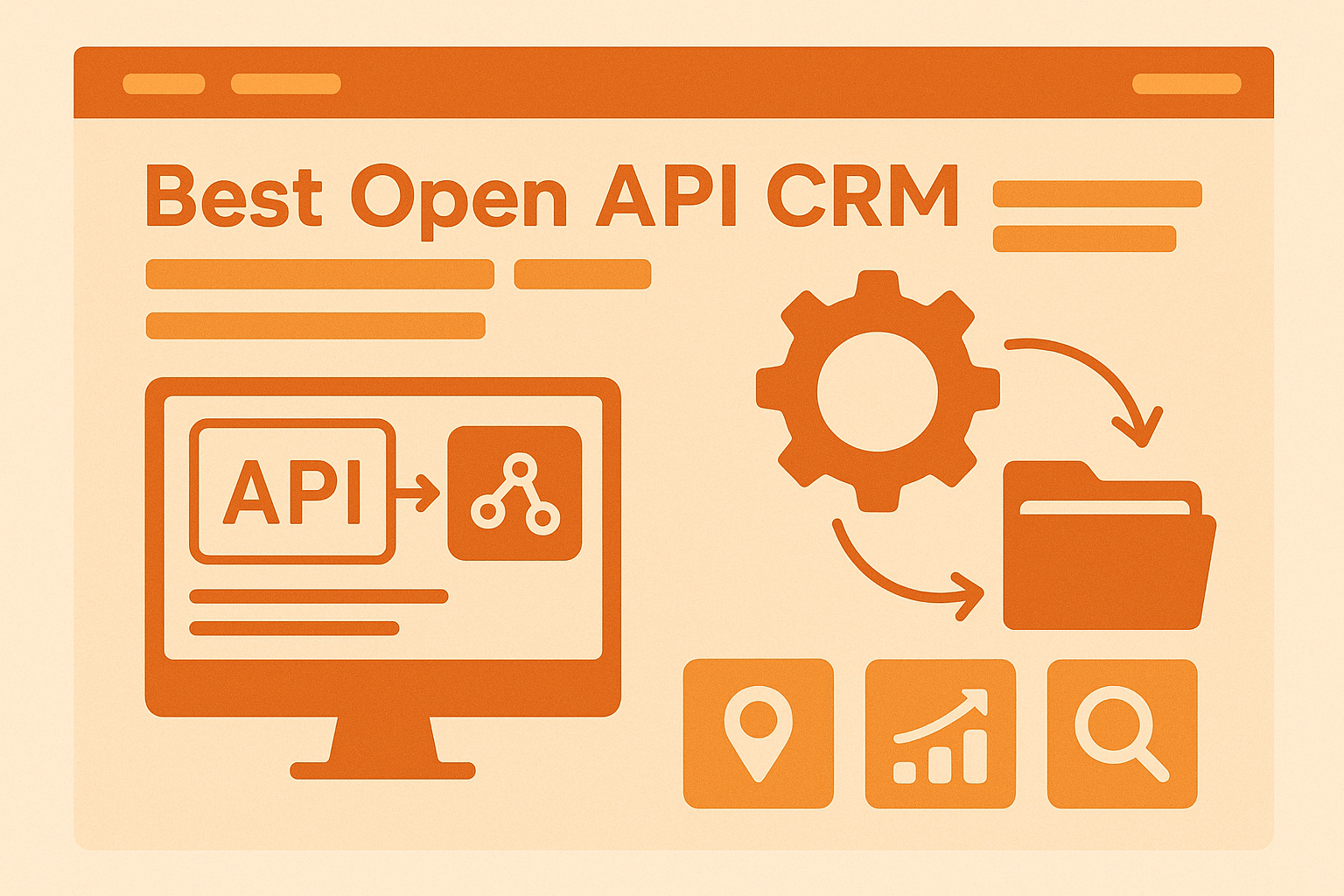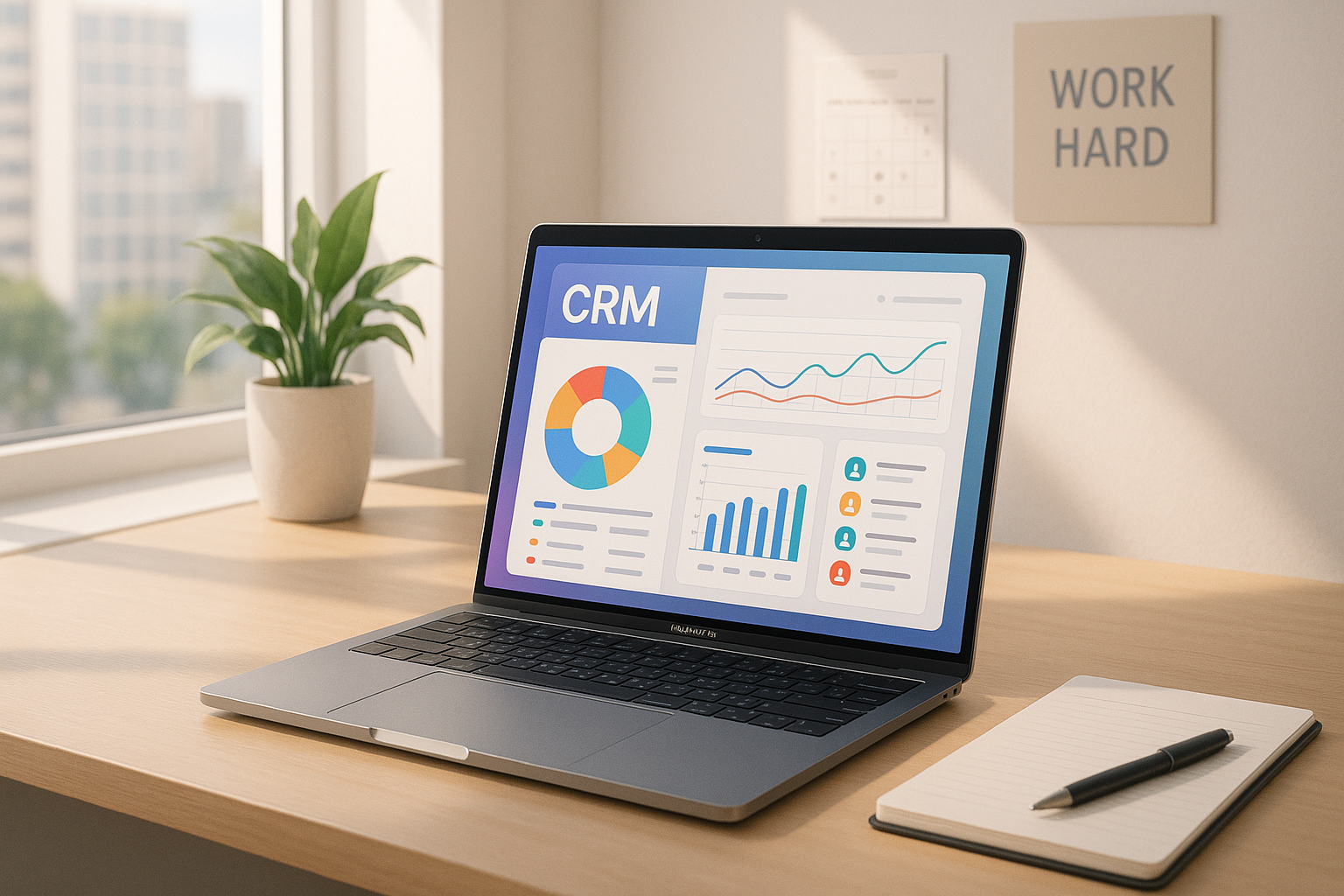What is MSP software?
MSP software enables companies to remotely oversee a client's IT infrastructure, software, and user systems. These services include network monitoring, backup and recovery, cybersecurity, help desk support, cloud services, and software deployment and management.
[Related article: Top 15 Endpoint Management Software]
How managed service software works
Managed service software helps managed service providers (MSPs) deliver IT services to clients by integrating with their IT infrastructure. It continuously monitors system health, sends alerts for issues, and allows MSPs to remotely access and manage devices. The software includes features like ticketing systems for tracking service requests, project management tools, and time tracking for billing.
Security management is also a key component, providing antivirus protection, patch management, and backup solutions. MSS automates routine tasks such as patch deployment and backups, using collected data to analyze system performance and security. A centralized dashboard gives MSPs an overview of all clients' systems, while user access management ensures that only authorized personnel can perform specific actions.
You should also check out these highly-rated CRM platforms to handle your prospects and leads and build stronger relationships:
Watch this video for a quick overview of these CRMs and get familiar with their user interfaces:
Benefits of Using Software for MSPs
Using software for Managed Service Providers (MSPs) offers several key benefits:
Proactive Maintenance✅
The software allows MSPs to identify and resolve issues before they impact clients, reducing downtime and preventing major problems.
Increased Efficiency📈
Automating routine tasks such as patch deployment, system scans, and backups saves time and allows MSPs to manage more clients with the same resources.
Enhanced Security🛡️
Continuous monitoring, automated patch management, and integrated security tools help keep client systems secure against emerging threats.
Improved Customer Service📞
Streamlined ticketing systems and faster response times increase customer satisfaction because inquiries are addressed swiftly and efficiently.
Cost-Effectiveness💲
By leveraging automation and efficient management tools, MSPs can offer competitive pricing while maintaining high service quality, making managed services a cost-effective solution for clients.
Centralized Management 🖥️
A single dashboard gives MSPs a holistic view of all client systems, simplifying management and enabling quick responses to any issues.
[Related article: 15 Important Benefits of Remote Management and Monitoring]
Key Features of MSP Software

The best MSP software should include these key features to ensure comprehensive IT management, security, and ease of use:
Patch Management
Ensures clients' systems are up-to-date by keeping track of the latest updates, installing them, monitoring their effectiveness, and testing patches before deployment. This improves system security and functionality.
Automatic Software Updates
Ensures that all network devices run the most recent software versions, resulting in optimal network performance and security.
Network Discovery and Mapping
Identifies all devices connected to the network and creates a detailed visual map of the network structure. This aids in better network management and troubleshooting.
Reporting and Analytics
Monitors overall system health and performance, providing valuable insights for better decision-making. Detailed reports help in identifying trends, potential issues, and areas for improvement.
Integration with Other Tools
Enhances productivity and collaboration by seamlessly integrating with other software and tools. This creates a more cohesive and efficient IT environment.
Backup and Disaster Recovery Solutions
Ensures the security and availability of client data. Regular backups and effective disaster recovery plans protect against data loss and minimize downtime in case of a system failure.
Usability
The primary goal of MSP software is to simplify IT processes. A user-friendly interface is essential to avoid frustration and inefficiency. Therefore, it's important to consider usability features such as customizable workflows and easy-to-navigate interfaces.
Top 10 MSP Software Options in 2024
1. IBM Application Management - Best for enhanced security
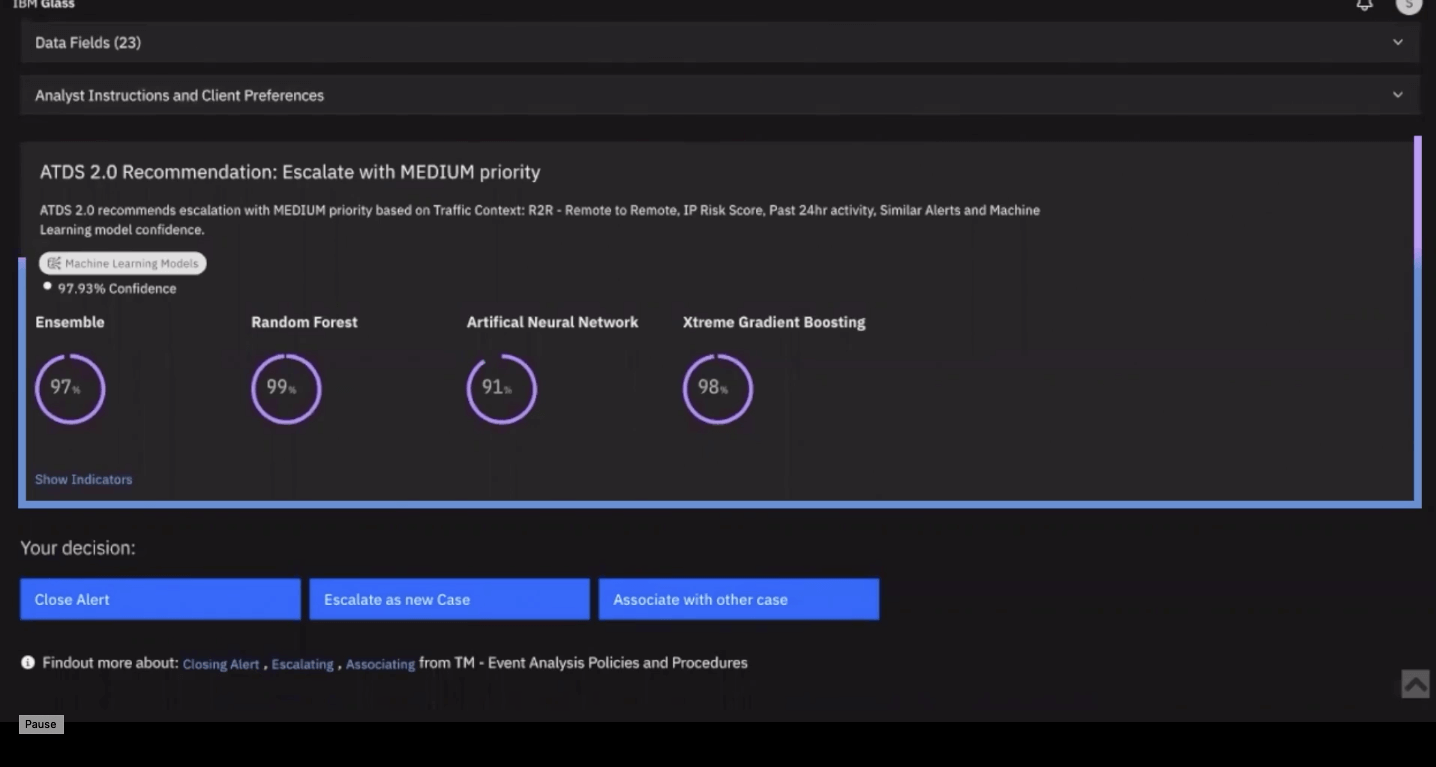
IBM Application Management offers a comprehensive solution for automating and updating IT applications. This best managed service provider software leverages cutting-edge AI and hybrid cloud technologies to help businesses use their full potential.
IBM's open ecosystem enhances the digital experience through strategic partnerships. Additionally, the company focuses on customer-centric initiatives to boost engagement at every interaction.
Pros:
- Real-time monitoring and in-depth analytics
- Reduced downtime and increased efficiency
Cons:
- Customer support can be improved
- Complex integrations
Pricing:
Contact the vendor for pricing details.
2. SolarWinds - Best for comprehensive MSP-focused offerings
SolarWinds delivers IT management software for MSPs and IT professionals. These solutions are built to boost efficiency, minimize downtime, and safeguard against cybersecurity threats.
SolarWinds boasts a comprehensive range of MSP-focused offerings. It supports remote monitoring and management and provides backup and disaster recovery solutions. Additionally, its service desk is a centralized platform for handling client tickets and requests.
With network monitoring, you can resolve network issues promptly, ensuring clients stay connected and productive. The platform's reporting and analytics offer insights into vital metrics like network availability, resource usage, and service performance.
Pros:
- User-friendly and intuitive UI
- Advanced security functions for preventing cyber threats
- Automation capabilities to enhance efficiency
Cons:
- Limited mobile functions
- Limited customization options for workflows
Pricing:
Contact the vendor for pricing details.
3. ManageEngine - Best for IT service desk management
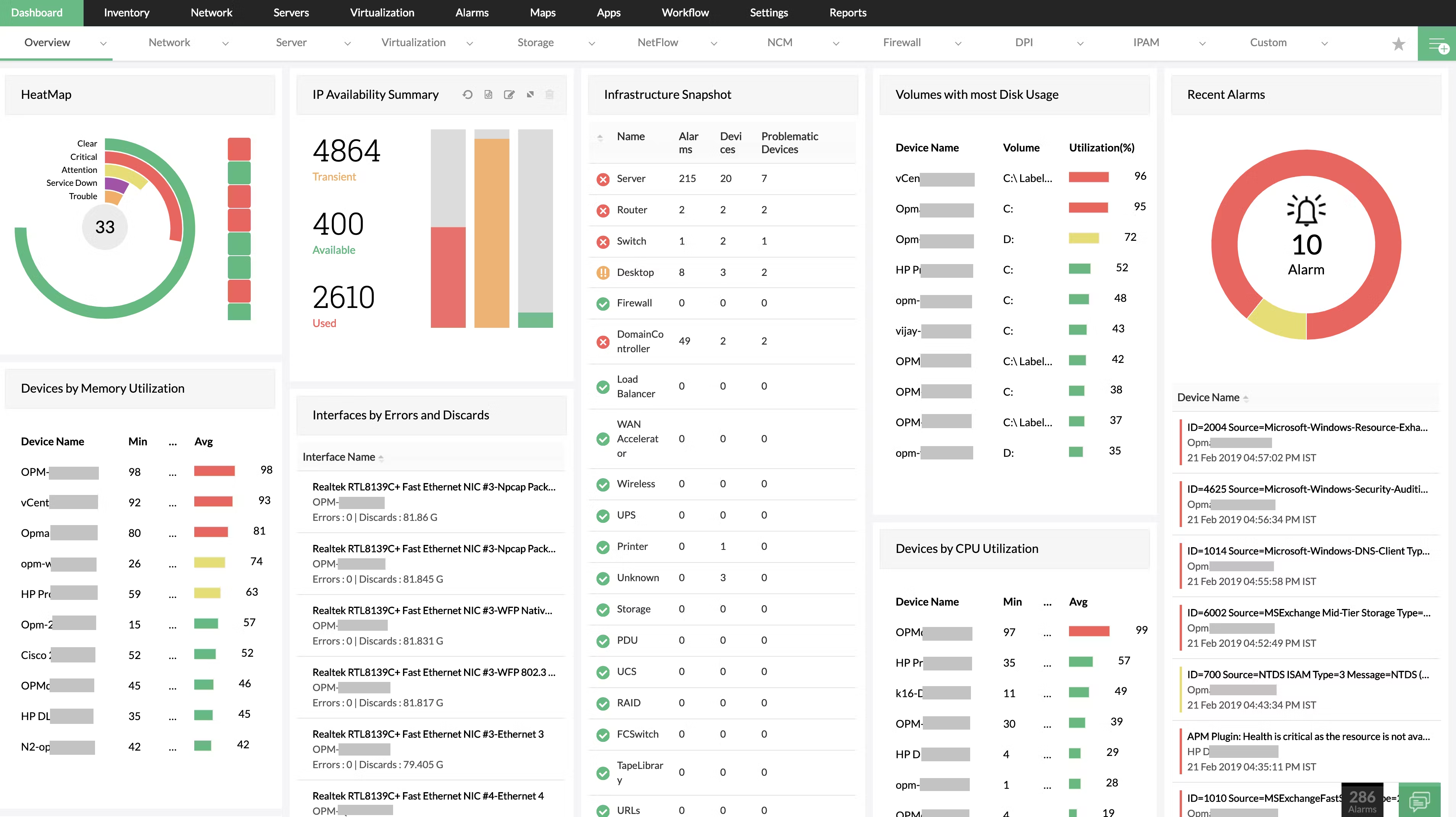
ManageEngine is an IT service management tool packed with features designed to streamline service desk operations for organizations.
ManageEngine offers a full suite of IT service desk capabilities, including incident, asset, and project management, as well as service catalogs and criteria-based workflows. It provides essential tools like a self-service portal, live chat, and a knowledge base. Additionally, it supports native mobile apps for iOS, Android, and Windows.
Pros:
- Personalized email and SMS notifications for ticket resolutions
- Automatic data archiving to maintain a clean IT help desk
Cons:
- Steep learning curve
- Limited integrations with third-party applications
Pricing:
Contact the vendor for pricing details.
4. SuperOps - Best for businesses seeking an integrated platform
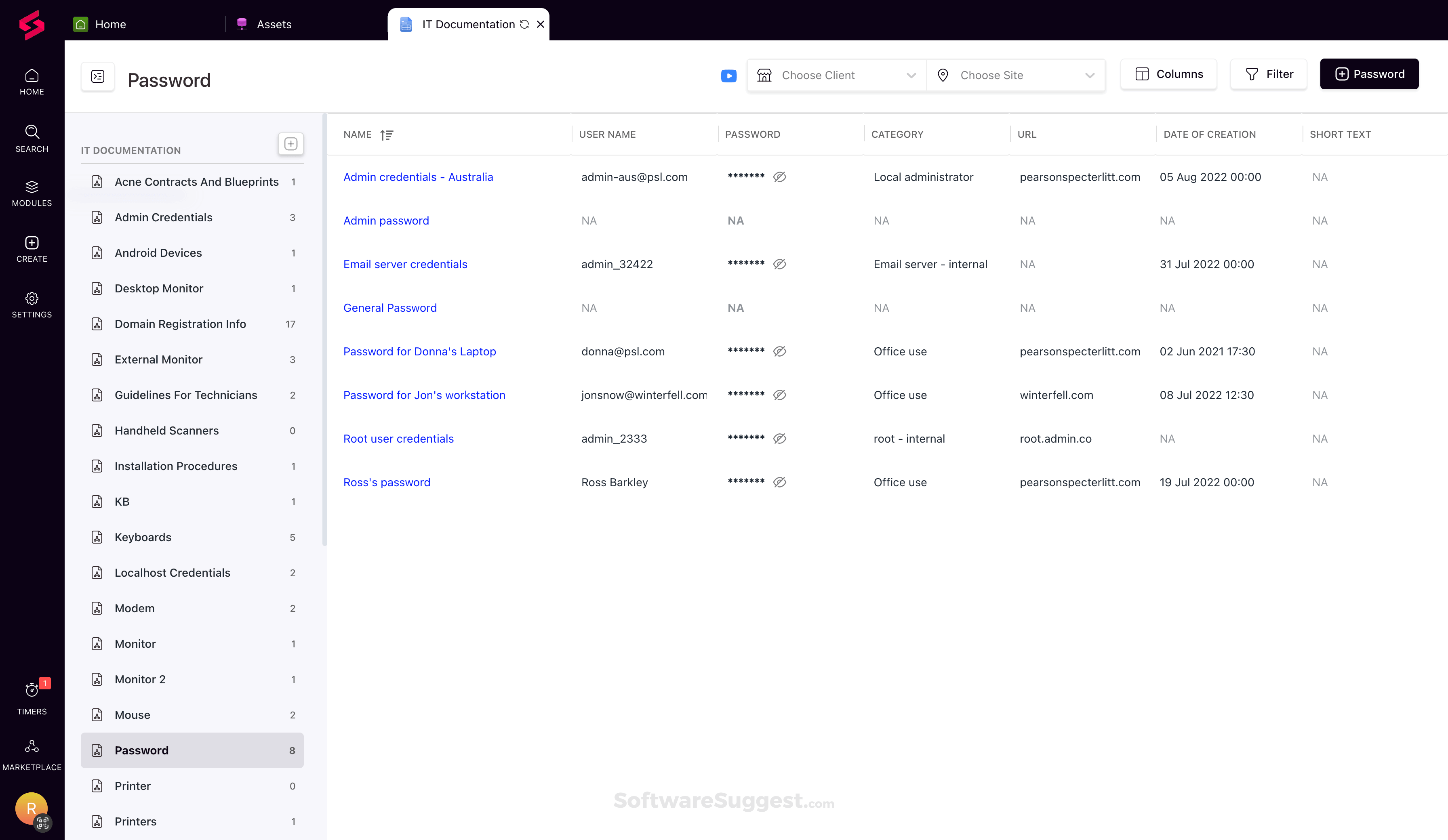
SuperOps is a professional services automation (PSA) platform created for MSPs that enables them to effortlessly manage clients, projects, and resources in one centralized hub.
This one of managed service providers (MSP) software offers a comprehensive suite of features including remote monitoring and management, asset management, a service catalog, custom dashboards, and integrated security solutions. It also provides a modern service desk for handling issues and tickets.
With SuperOps, you get a CRM (customer relationship management) to streamline client management, contract management to simplify invoicing, automated patch management, and rule-based alerts. Additionally, its IT documentation features help you organize knowledge efficiently.
Pros:
- Runbooks for faster technician onboarding
- Time tracking feature
Cons:
- Limited integrations
- Limited functionality in the mobile app
Pricing:
From $59 per user per month, billed annually.
5. Datto - Best for backup and disaster recovery
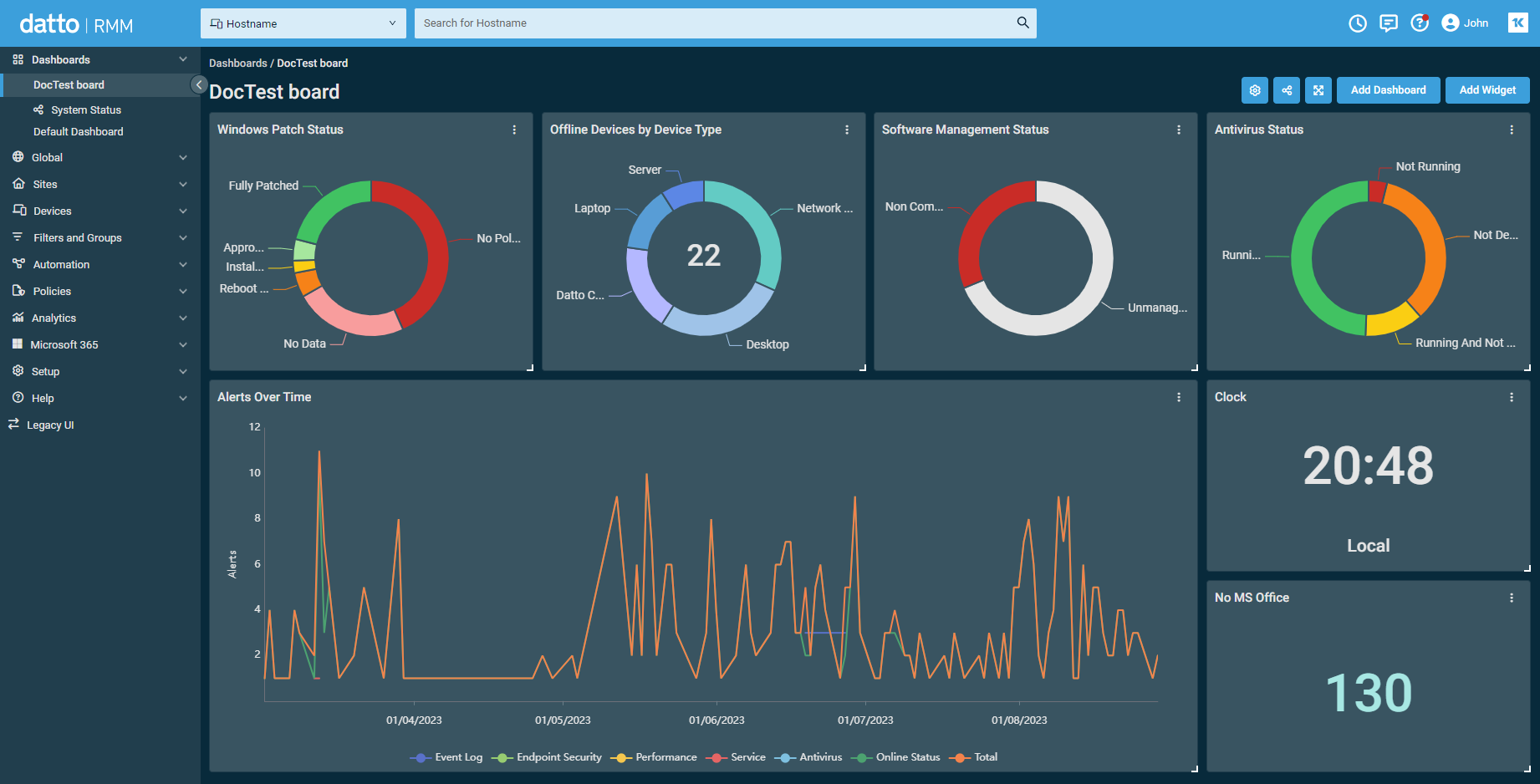
Datto's disaster recovery solutions enable swift restoration of essential business systems, reducing downtime and ensuring continuous operations.
Datto offers a comprehensive business continuity package that enhances IT resilience with features like ransomware protection, agentless backup technology, autoverify, and server image backup. Additional features include rapid rollbacks, backup insights, endpoint protection, and backup solutions compatible with Windows 7, 10, and 11.
Pros:
- User-friendly UI
- Hybrid cloud options for additional security
- Scalable to suit businesses of any size
Cons:
- Limited support for macOS and Linux
- Initial setup can be challenging
Pricing:
Contact the vendor for pricing details.
[Related article: A Comprehensive Insight RMM Software Tools]
6. Magna5 - Best for comprehensive protection and support
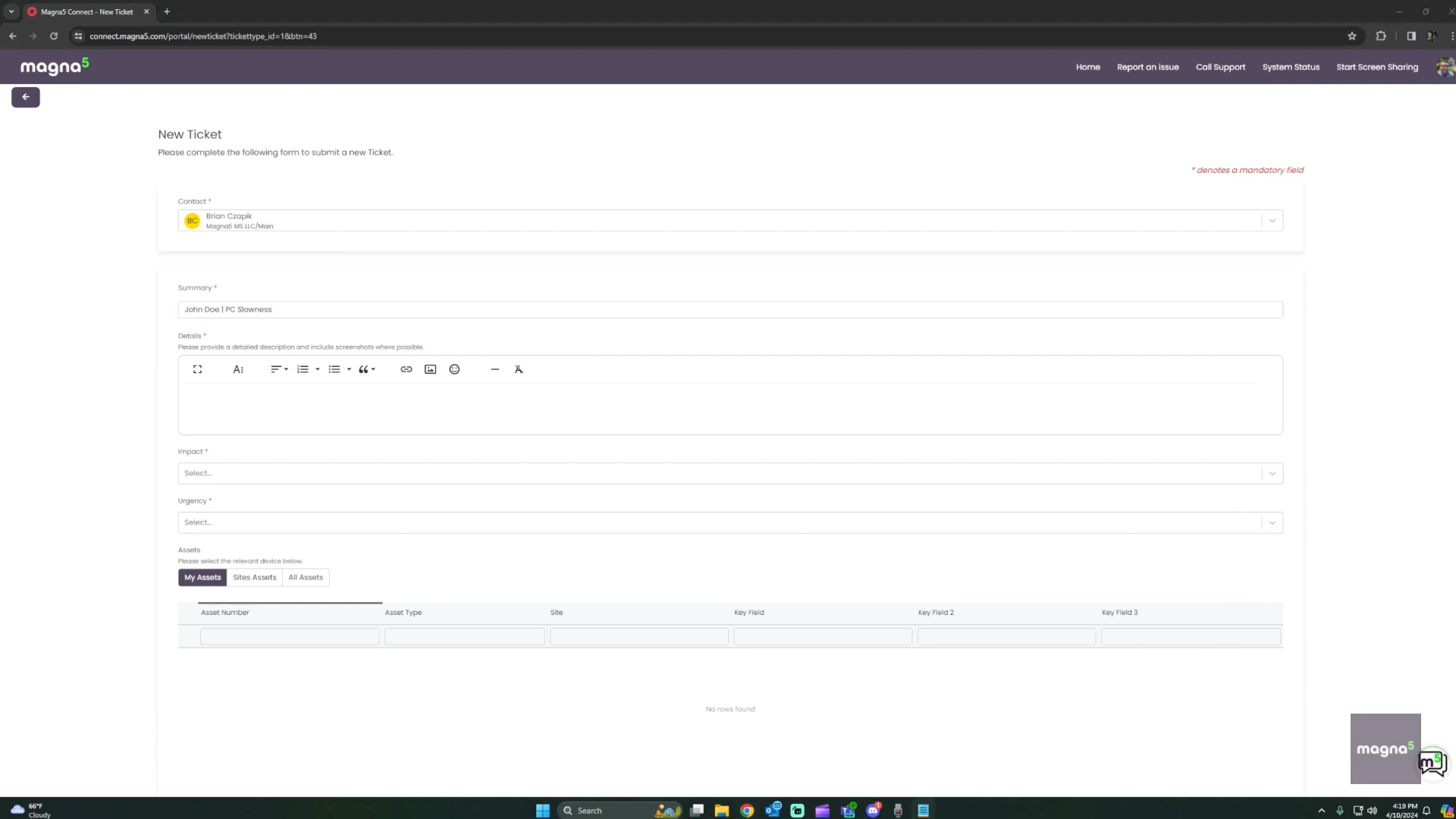
Magna5 provides advanced IT solutions designed to enhance business systems and reduce data-related risks, offering comprehensive protection and support for businesses of all sizes.
Magna5 specializes in managed IT services, cloud, private cloud, data center services, and cybersecurity solutions, serving over 600 clients. Their Pentaguard suite ensures efficient and scalable business operations. However, Magna5 operates exclusively in the American market.
Pros:
- High technical expertise
- Transparent pricing structure
Cons:
- Lengthy troubleshooting process
- Slow after-hours support
Pricing:
Contact the vendor for pricing details.
7. Meter - Best for secure internet infrastructure
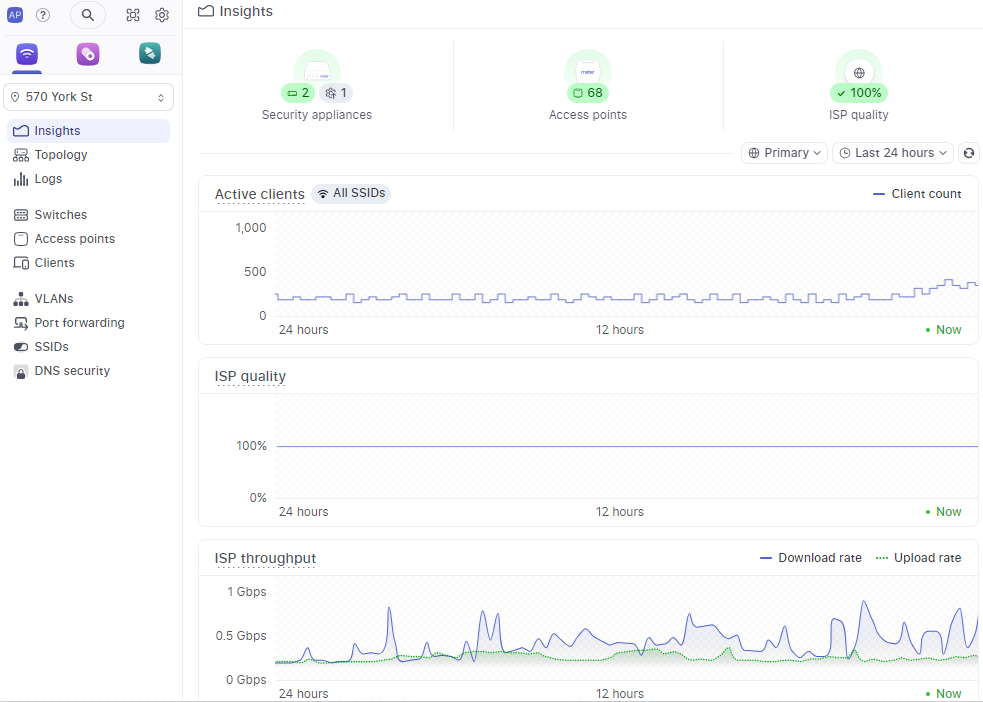
Meter provides efficient and secure internet infrastructure solutions that help businesses maintain connectivity and grow their capacity. Their high-end offerings include network setup and management, DNS security, high-speed internet connections, ISP procurement, and network design.
Meter's redundant designs and quick installations guarantee high availability, detailed visibility, and complete control. While the company excels in network infrastructure solutions, it does not offer a comprehensive suite of managed services like some competitors.
Pros:
- User-friendly products
- Strong enterprise-level support
Cons:
- Limited advanced workflows
- The installation process could be improved
Pricing:
Contact the vendor for pricing details.
8. Cortavo - Best for cost management
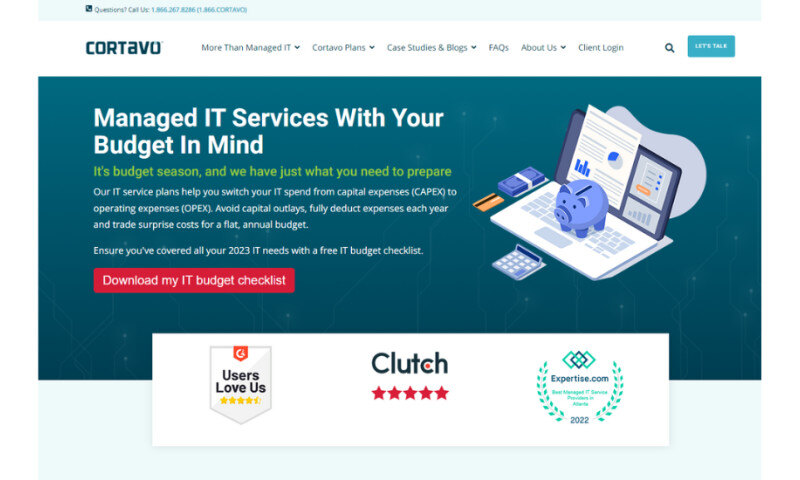
Cortavo provides a comprehensive array of managed IT services, cybersecurity, hybrid workforce management, and cost management solutions. It supports the needs of hybrid, onsite, and remote workplaces.
Cortavo offers all-inclusive service plans designed to streamline IT costs, catering to businesses of all sizes—from startups, small businesses to large enterprises. It also boasts higher IT desk support scores compared to some competitors.
Pros:
- Fast response times and on-site support
- Simple ticketing system
Cons:
- Lengthy initial setup process
- Frequent connectivity problems
Pricing:
Starting at $95 per user per month.
9. Pulseway - Best for real-time monitoring of all your apps
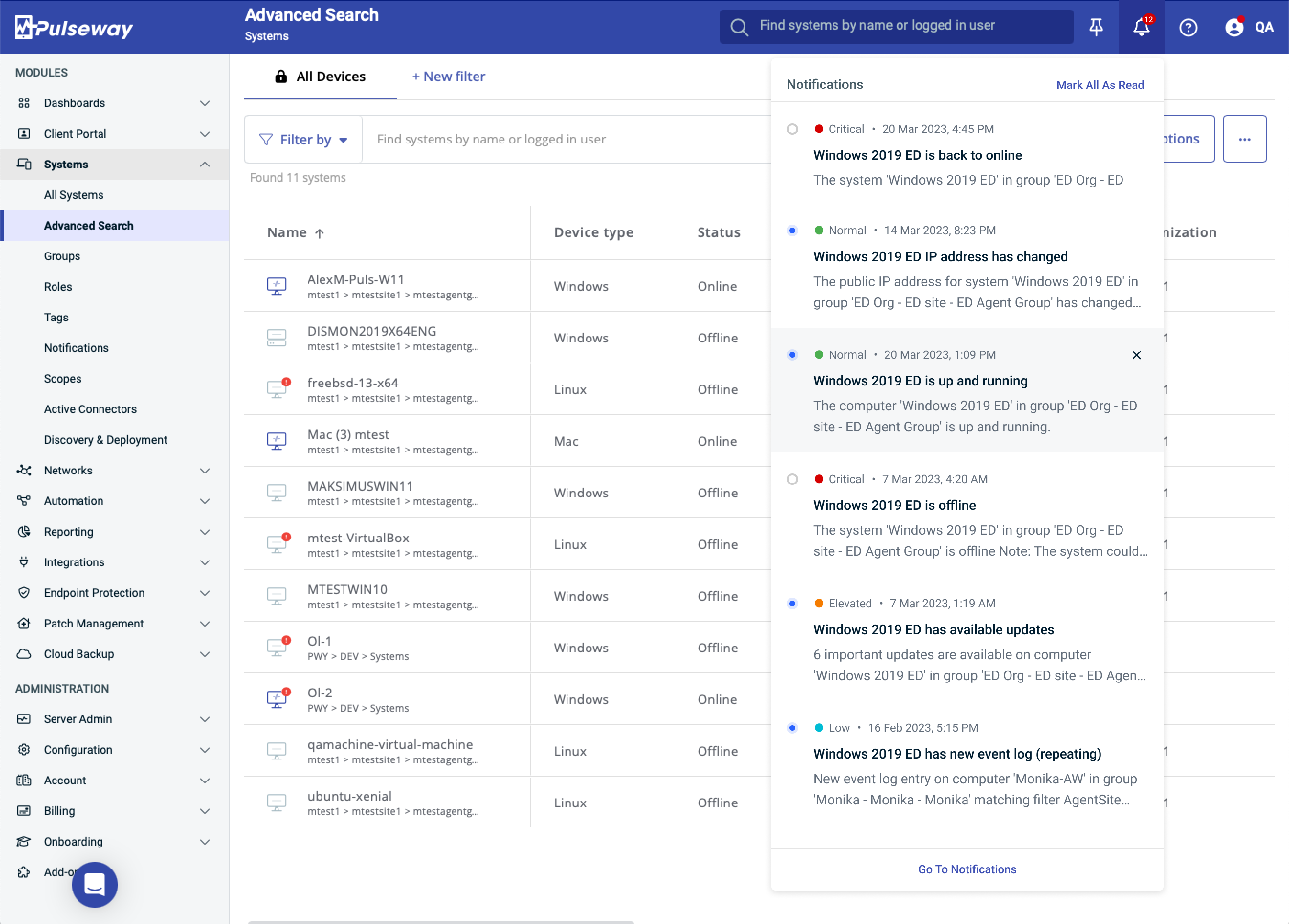
Pulseway enables real-time monitoring of all your systems and applications, providing enhanced visibility and control over your IT infrastructure.
With Pulseway's real-time monitoring, you can continuously track device performance and status, including CPU usage, memory usage, disk space, network usage, and more. This monitoring capability extends to web applications, cloud services, and network devices.
Receive instant notifications about IT issues through SMS, email, or push notifications on your mobile devices. Access detailed reports on system performance, usage, and health. Utilize Pulseway's advanced automation feature to automate multi-step tasks and workflows.
Pros:
- The best monitoring software for MSP
- Designed with a mobile-first approach
- Supports multiple platforms
- Offers remote access and control capabilities
Cons:
- Limited integration options with third-party applications
- No built-in backup and recovery features
Pricing:
From $44 per month, billed annually.
10. Azure Managed Applications - Best for cloud solutions
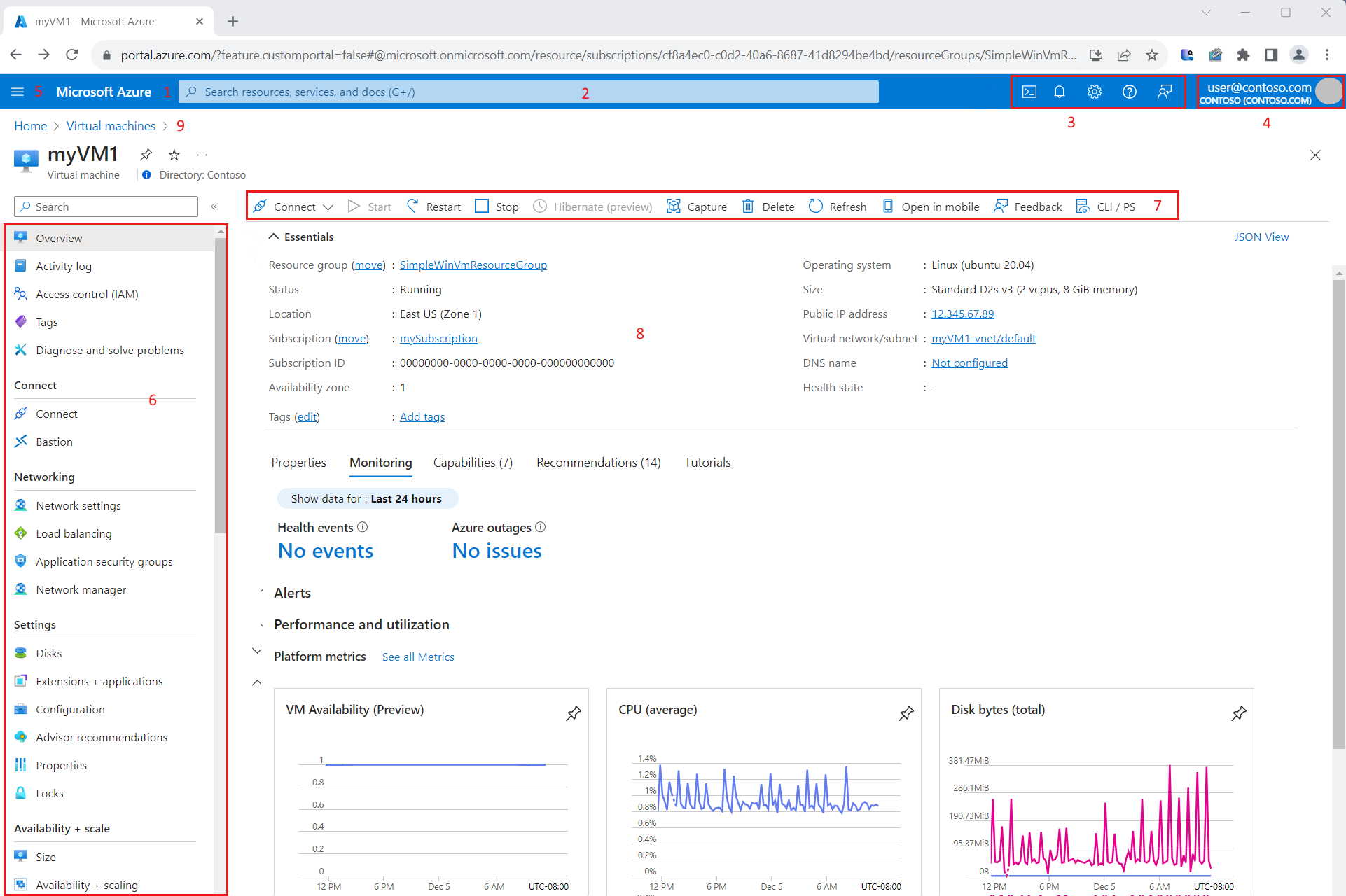
Azure Managed Applications offer businesses readily deployable and operational cloud solution options. It provides essential infrastructure and support through two managed applications: Service Catalog and Azure Marketplace.
The Azure Service Catalog aids in developing internal solutions that comply with organizational standards. Azure Marketplace is accessible to businesses, enabling them to create and deliver fully managed turnkey applications, thus unlocking new revenue streams.
Pros:
- Built on hyper-scale Azure infrastructure
- Administration and maintenance are handled effortlessly by Azure
Cons:
- Service and support could be enhanced
Pricing:
Free account with a credit of $200, followed by a pay-as-you-go model.
Comparison Chart of Leading Managed Services Providers
|
Vendors |
Best for |
Pricing |
Overall Rating |
Ease of Use |
Service |
|
IBM Application Management |
Best for enhanced security |
Contact the vendor for pricing details |
4.5/5 |
4/5 |
4/5 |
|
SolarWinds |
Best for comprehensive MSP-focused offerings |
Contact the vendor for pricing details |
4.6/5 |
4.6/5 |
4.6/5 |
|
ManageEngine |
Best for IT service desk management |
Contact the vendor for pricing details |
4.4/5 |
4.2/5 |
4.2/5 |
|
SuperOps |
Best for businesses seeking an integrated platform |
From $59 per user per month, billed annually |
4.2/5 |
3.9/5 |
4/5 |
|
Datto |
Best for backup and disaster recovery |
Contact the vendor for pricing details |
4.4/5 |
4.1/5 |
4.1/5 |
|
Magna5 |
Best for comprehensive protection and support |
Contact the vendor for pricing details |
4.1/5 |
3.9/5 |
3.9/5 |
|
Meter |
Best for secure internet infrastructure |
Contact the vendor for pricing details. |
4.2/5 |
4/5 |
3.9/5 |
|
Cortavo |
Best for cost management |
Starting at $95 per user per month |
4.3/5 |
4/5 |
3.9/5 |
|
Pulseway |
Best for real-time monitoring of all your apps |
From $44 per month, billed annually |
4.7/5 |
4.7/5 |
4.7/5 |
|
Azure Managed Applications |
Best for cloud solutions |
Free account with a credit of $200, followed by a pay-as-you-go model |
4.6/5 |
4.1/5 |
4.3/5 |
Choosing the Best MSP Software for Your Business
Choosing the best Managed Service Provider (MSP) software for your business involves several key considerations to ensure it meets your needs and objectives.
1. Identify Your Requirements
Determine the specific challenges your business is facing, such as IT security, system downtime, or scalability issues. Clearly outline your objectives for implementing MSP software, whether it's improving efficiency, enhancing security, or reducing costs.
2. Research Available Options
Look for MSP software that offers features aligned with your requirements, such as remote monitoring, security management, ticketing systems, and automation capabilities.
Ensure the software integrates seamlessly with your existing IT infrastructure, including hardware, software, and cloud services.
Gather insights from reviews, testimonials, and case studies to understand the real-world performance and customer experiences with each software solution.
3. Assess Security and Compliance Features
Prioritize software that offers robust security features, such as antivirus protection, patch management, encryption, and multi-factor authentication. Check that the software allows you to meet industry regulations and standards relevant to your organization, such as GDPR, HIPAA, or PCI DSS.
4. Consider Ease of Use and Training
Select software with an intuitive UI that is simple for your team to navigate and utilize efficiently. Assess the software vendor's training resources, documentation, and customer support options.
5. Calculate Total Cost of Ownership (TCO)
Consider the software's pricing structure, which includes subscription fees, license expenses, and any extra payments for add-on features or support. To accurately calculate the total cost of ownership, take into account any hidden costs such as implementation fees, training charges, and maintenance costs.
6. Trial and Demo
Schedule a demo or trial period to test the program and assess its performance, usability, and fit for your business needs.
Involve stakeholders and end-users in the review process to gain comments and insights before making a final choice.
7. Vendor Reputation and Support
Choose a reputable MSP software vendor with a track record of reliability, innovation, and customer satisfaction.
Ensure the vendor offers responsive customer support, including technical assistance, troubleshooting, and ongoing updates and maintenance.
[Related article: How to Choose a CRM System: Checklist with 6 Tips]
Challenges in Implementing MSP Software

Implementing Managed Service Provider (MSP) software can be highly beneficial for businesses, but it also comes with challenges.
Here are some common challenges in implementing MSP software:
- Integration Complexity: Integrating new MSP software with existing IT infrastructure can be difficult and time-consuming, especially if there are compatibility issues with legacy systems or custom applications.
- Data Migration: Transferring information from old programs to the new MSP software while ensuring data integrity and security can be challenging, particularly for large volumes of data or sensitive information.
- User Adoption: Employees and stakeholders may resist change, which can hinder the adoption of new MSP software. Proper training and communication are essential to overcome this challenge and ensure successful implementation.
- Security Concerns: Implementing new software introduces potential security risks, such as vulnerabilities in the software itself or misconfiguration during deployment. To reduce these risks and secure sensitive data, appropriate security measures must be implemented.
- Compliance Requirements: Businesses operating in regulated industries must ensure that the MSP software complies with industry-specific regulations and standards. Implementing software that meets compliance requirements and facilitates auditing and reporting can be challenging.
- Resource Constraints: Limited budget, time, and skilled personnel can pose significant challenges during MSP software implementation. Proper resource allocation and project management are critical for overcoming these limits and ensuring successful implementation.
- Vendor Selection: Choosing the right MSP software vendor is crucial for successful implementation. Evaluating providers based on reputation, reliability, support services, and future roadmap might be tough, but it is necessary for long-term success.
- Change Management: Implementing MSP software often involves organizational changes, such as new workflows, roles, and responsibilities. Successful implementation requires excellent change management and stakeholder buy-in.
Support and Resources for MSP

Support and resources are vital for Managed Service Providers (MSPs) to successfully implement and manage MSP software. Vendor support services, including technical assistance through phone, email, and live chat, often available 24/7, help minimize downtime and resolve issues promptly.
Training and certification programs, offered by vendors and third-party organizations, equip MSPs with the skills to use the software effectively and stay updated on new features. Comprehensive documentation, such as user manuals and FAQs, alongside online knowledge bases, provide essential information and troubleshooting guides.
Engaging with other MSPs through community forums and user groups enables sharing of experiences and insights. Vendors also host webinars and workshops for in-depth training on features and industry trends. Some vendors offer professional implementation services, including setup assistance and data migration, ensuring a smooth transition.
Consulting services provide tailored advice to optimize software use, while online resources like blogs and whitepapers offer valuable information on trends and best practices. Dedicated customer success managers from some vendors provide personalized support and strategic planning.
Utilizing these support services and resources, MSPs can enhance their capabilities, overcome challenges, and deliver superior services to their clients.
[Related article: What is infrastructure monitoring and why it's important in present reality?]
FAQ
What is the difference between an MSP and a VMS?
An MSP, or Managed Service Provider, is an organization that remotely monitors a client's IT infrastructure and/or end-user systems on a proactive basis using a subscription model. MSPs handle services such as network management, cybersecurity, data backup, and IT support, ensuring that the client's IT operations run smoothly and securely.
A VMS, or Vendor Management System, is a software platform that helps organizations manage their contingent workforce. It facilitates the procurement, management, and payment of temporary staff, freelancers, and contractors. VMS solutions streamline the hiring process, track worker performance, and ensure compliance with labor regulations.
In summary, an MSP focuses on managing IT services and infrastructure, while a VMS focuses on managing contingent workforce procurement and administration.
Who is the largest MSP?
Identifying the largest Managed Service Provider (MSP) can be challenging as it depends on various criteria such as revenue, market presence, and range of services offered. Several industry leaders are mentioned in this article. Companies like IBM, SolarWinds, and ManageEngine are prominent options.
Does Apple have MSP?
Apple does not function as a traditional Managed Service Provider (MSP). However, Apple collaborates with various MSPs and IT service providers to support their products in business environments.
